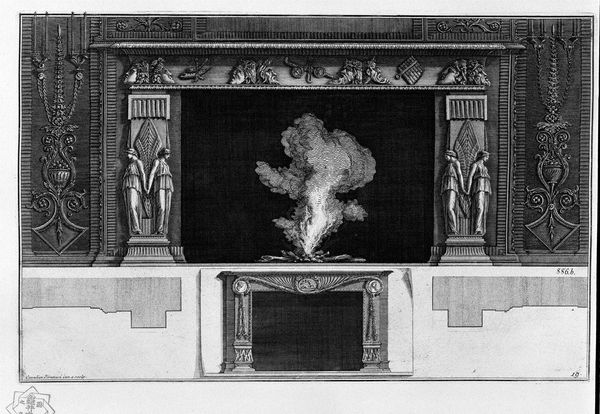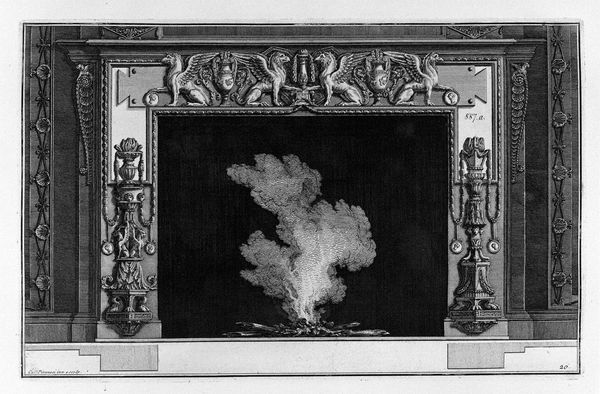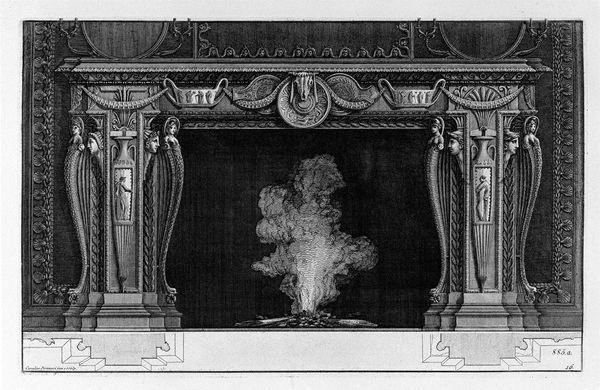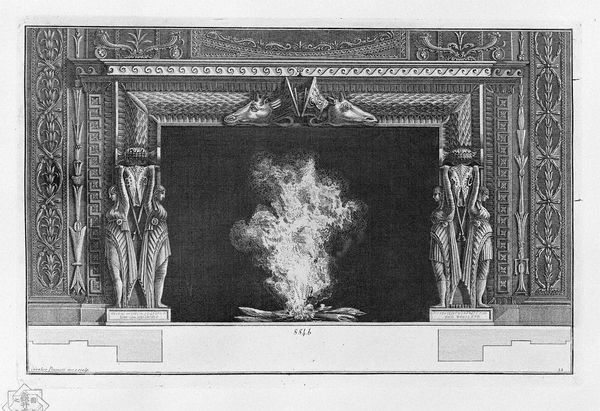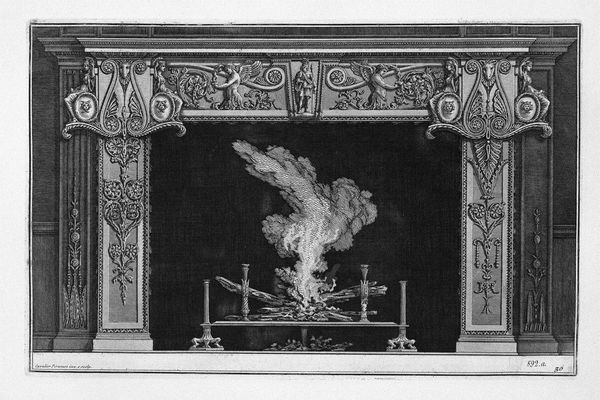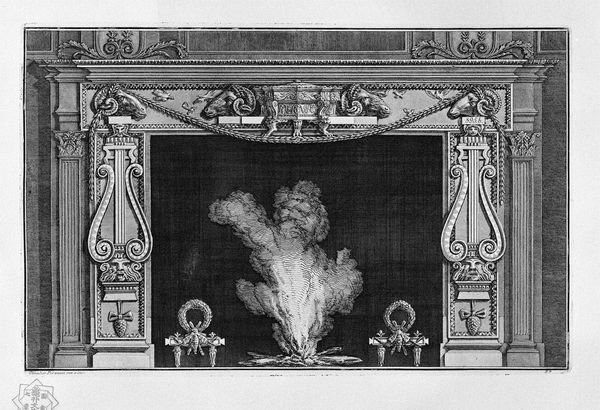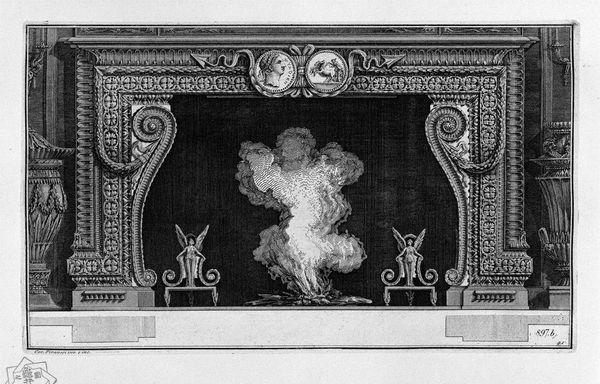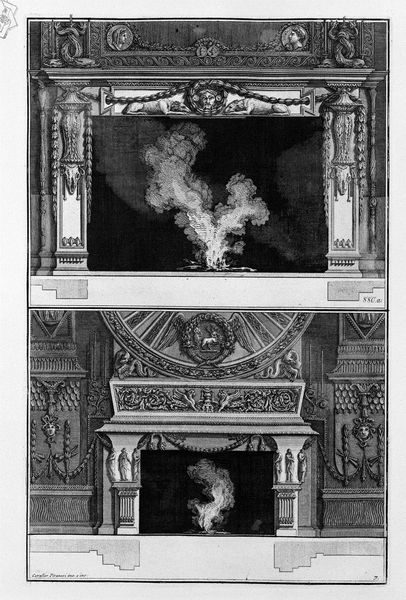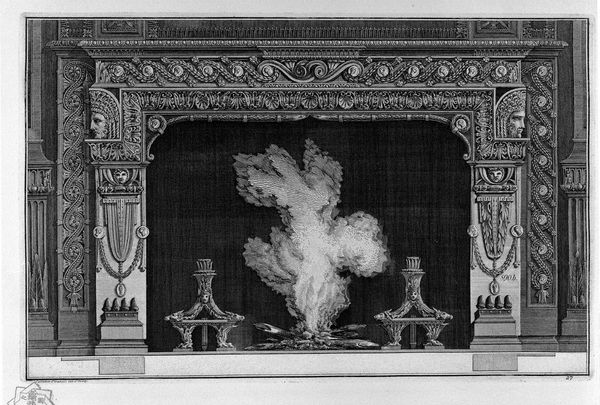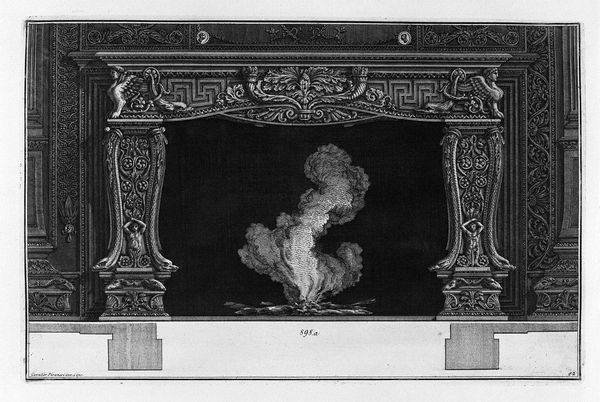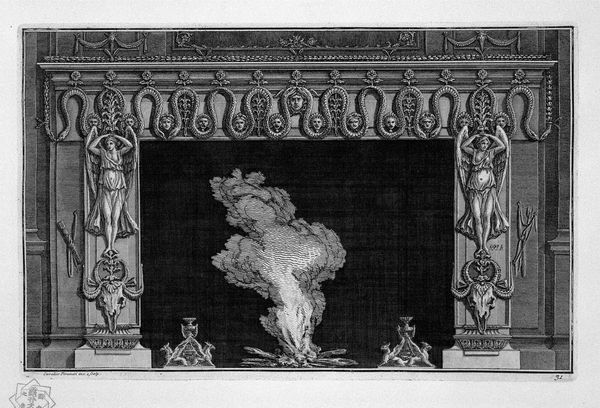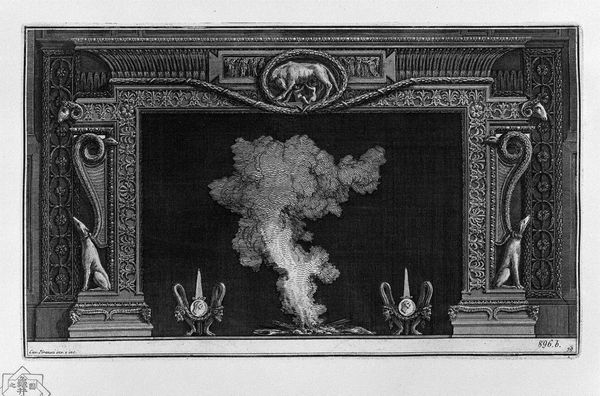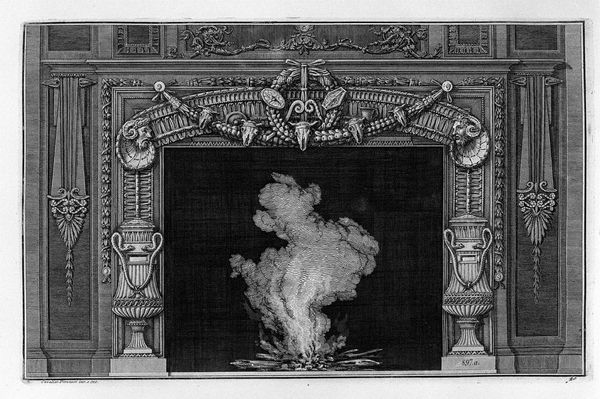
Fireplace with draped figures and horns of plenty at the hips, and a medallion on the frieze and two heads in profile between two fasces
0:00
0:00
drawing, print, engraving, architecture
#
drawing
#
neoclacissism
# print
#
sculpture
#
charcoal drawing
#
charcoal
#
engraving
#
architecture
Copyright: Public domain
Giovanni Battista Piranesi made this etching of a fireplace, complete with draped figures and horns of plenty, in 18th-century Italy. But this isn't just a drawing of a fireplace; it's a statement about power, taste, and the role of classical imagery in shaping contemporary society. Look at the details: the fasces, ancient Roman symbols of authority, flanking the medallion. Consider also the draped figures that act as silent witnesses to the domestic rituals that might unfold before the fire. Piranesi, deeply influenced by the rediscovery of Pompeii, used his etchings to popularize neoclassical design. But he wasn't just copying the past. He was reimagining it, infusing it with a sense of drama and grandeur that appealed to the wealthy elites of his time. To truly understand Piranesi, we need to delve into the visual culture of 18th-century Europe, exploring pattern books, architectural treatises, and the social networks that shaped artistic production. The history of art is always contingent on its social and institutional context.
Comments
No comments
Be the first to comment and join the conversation on the ultimate creative platform.
